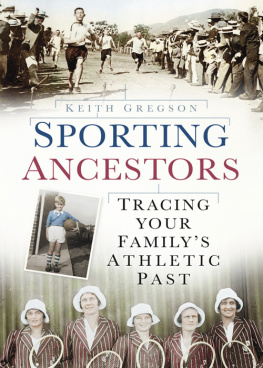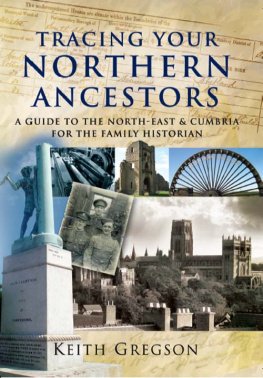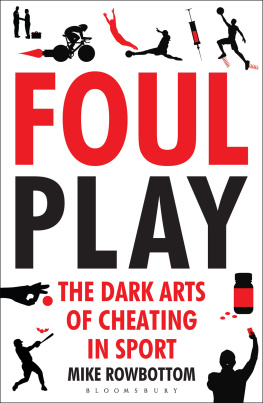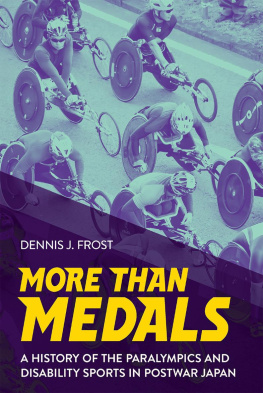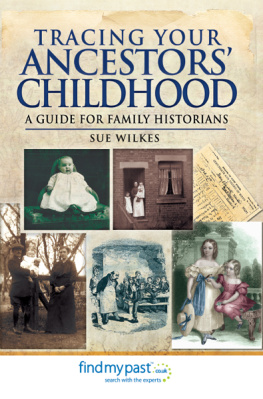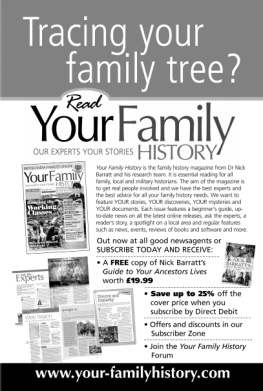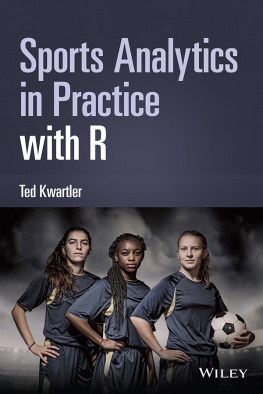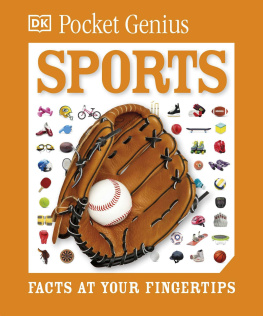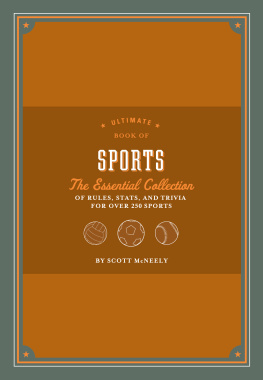
C ONTENTS

The author in 1950s Manchester United football kit. (Authors collection)
P REFACE
With the onward march of modern technology it has now become much easier to unearth the skeletons of direct ancestors and their siblings from Victorian times onwards. But skeletons are not enough. We all want to know what these ancestors were like, what they thought and what made them tick. If the nineteenth-century French medieval historian Michelet is right then we really are the sum of our ancestors and there can be no more rewarding aspect of family history than putting flesh onto ancestral bones.
Should this argument be accepted then a book about the role of sport in ancestral life will be of considerable interest and use to family historians. Most families have some form of connection with sport, usually at amateur level, but some might discover that an ancestor was a local champion runner or cricketer. These ancestors were not necessarily full time or professional but such has been the impact of sport on British life over the last century and a half that it has left an indelible impact. It has also left records and the everlasting popularity of sport means that these records stretch from accounts of mighty cricket test matches to ones relating to the humblest of games on the village green. Press coverage also extends from cup finals at Wembley to local league meetings between the Co-op and Post Office in Barrow-in-Furness on a wet Wednesday afternoon.
Medals, trophies, photographs, newspaper cuttings many survive to be handed down in families. National, regional and local research centres have relevant archives and many sports clubs have managed to keep hold of archives naming literally hundreds of ordinary folk who have played sport both for profit and for fun.
During a televised broadcast of the 2010 Wimbledon tennis championship, a camera panning the audience came to rest on an older couple. The commentator noted that they were the parents of one of the current players the mother had been a top swimmer and the father an international canoeist. Sport must be in the genes, the commentator noted. What follows may help to prove this statement to be true.
My birth certificate bears the legend Wembley, which is a good start. Sport plays a part in my own family history. I played cricket, football and rugby (badly) in my youth and coached mini rugby and ran a rugby club mini section in the 1990s. I completed the London Marathon on three occasions and the Great North Run on nineteen. I am a season ticket holder at Sunderland AFC and a supporter of hometown Carlisle United. One son (now in his 30s) is a competition-winning golfer. A second son (retired through injury) captained a county rugby side containing members of the current England First XV and coached. A third represented Great Britain at American football, played rugby for Sunderland First XV and is now seriously involved in mixed martial arts.
I have written extensively on the history of sport for some thirty years, starting in the 1970s with an article on the story behind the hunting song John Peel and progressing through a whole range of articles and a BBC local history series on professional boat racing in Victorian times. This interest in boat racing is ongoing, as witnessed by a lead feature on this topic in Ancestors magazine in the early twenty-first century. More recently I have written a rugby club history.
In the last few years I have worked closely with the award-winning sports historian Professor Mike Huggins (now retired from the University of Cumbria). We developed an unusual research area in using song as a source for sporting history. This has led to lectures in Aarhus (Denmark), Budapest, Stirling and Leeds, and to numerous joint publications in peer-reviewed journals. In other words, though not much of sportsman myself, I am sport mad and hope that what follows will be of use to others of a similar bent who are interested in researching their family trees.
H OW TO U SE THIS B OOK
The terms Victorian and Edwardian appear frequently in the book. These are used strictly as Victorian (18371901) and Edwardian (190110). The Victorian era has been subdivided. The early Victorian period covers the years from 1837 to the middle of the 1850s, with the mid-Victorian period running from there to 1880 and the late Victorian period then taking us up to 1901. There are also occasional references to the period just after the Napoleonic Wars, which came to an end in 1815. The years from 1910 to 1914 are described as just before the First World War; the war itself covering the years from 1914 to 1918. The inter-war years stretch from 1918 to 1939.
The book concentrates mainly on the discovery of sporting ancestors in the Victorian and Edwardian periods. There are a number of reasons for this. In the first place, these are important periods in the development of British sport as the Industrial Revolution took a grip and the balance of population moved from countryside to town. Though for many living in towns and cities leisure time was at a premium, it was often used for sport and the gregarious nature of town life naturally led to the development of team games and competition. At the same time, these were periods during which the recording of personal and sporting information was on the increase, and ancestors become easier to discover and monitor than they were previously. Although this particular review of ancestral sport is carried on in some cases beyond the First World War, it doesnt go much further into what might be regarded as living memory. In general, living memory may now start at the Second World War or even later but, as explained in the chapter on sources, at least we have the advantage over earlier periods in having first-hand recordings (spoken and visual) from much of the post-First World War period. This was rarely the case for earlier times.
In terms of pure geography, the sporting ancestry covered in this book extends across the British Isles and there are references throughout to areas now in the United Kingdom and the Republic of Ireland. However, there is a leaning towards the English experience, partly because of the relative size of the English population and partly because of the authors own research background and experience. Within England too there is a tendency to use more examples from the north than from other regions despite conscious efforts to find a balance. As these examples can generally be used to aid research carried out elsewhere in the British Isles this bias may be excused. There is also little space to deal with the British abroad, i.e. those playing or spreading sport beyond our shores.
A conscious decision has also been made to divide ancestral sporting experience into two categories: amateur and professional. This does not always work. Sometimes it is difficult to prove that those who played for amusement alone were not benefiting financially from their involvement in sport. This benefit could range from a few pennies in a boot for transport coverage to a complete professional shamateurism. In cricket in particular it was claimed that the cunning amateur, wealthy as he might be, could make more out of the game from perks than the relatively impoverished professional. All this noted, the headings are convenient and generally work and where they dont every effort has been made to point this out.
Finally, as far as these notes are concerned, a warning as to the problems that have to be faced when dealing with the simple word sport. Today we may have our own picture of what constitutes sport, or a sport, but that picture may not be the same as the one envisaged in the past. This problem can be observed in a wonderful statement made by William Grenfell (18551945) in the 1930s. Also known by his title, Lord Desborough, he is a fine example of one type of English sportsman of his time. He rowed for Oxford in the boat race, won medals for fencing and was a top administrator in cricket, tennis, fencing and rowing. His use of the words sport, games and pastimes are particularly intriguing, though possibly confusing:
Next page
